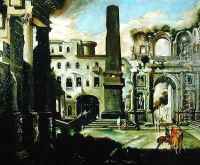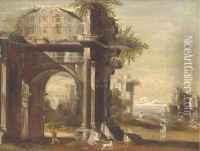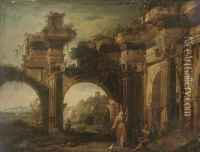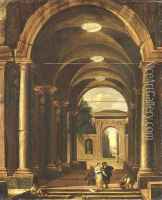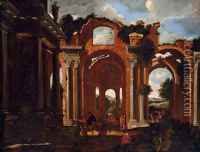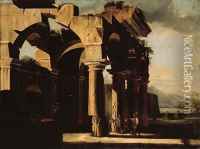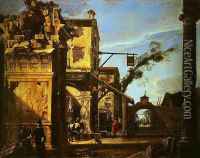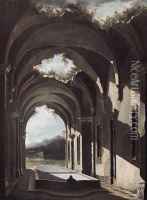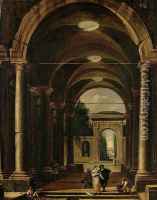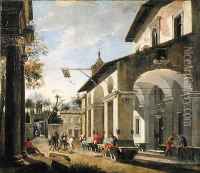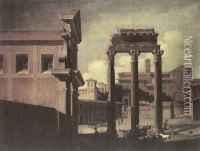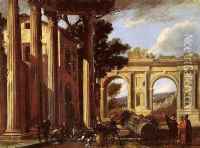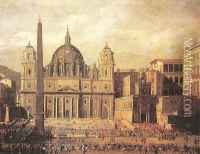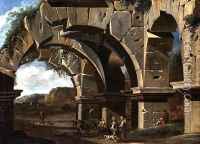Viviano Codazzi Paintings
Viviano Codazzi was an Italian Baroque painter known for his architectural paintings, which include depictions of ruins, Classical architecture, and perspective views. He was born in 1604 in Bergamo, Lombardy, although some sources suggest he may have been born in Valsolda. Codazzi is primarily associated with the artistic scene in Naples and Rome, where he spent most of his career.
Viviano Codazzi's early life is not well documented, but it is believed that he received his initial training in Italy before moving to Naples around 1634. In Naples, he found a thriving artistic community and began to develop his distinctive style of architectural painting. His works from this period include views of ancient Roman ruins, often populated with small figures to provide scale and human interest.
In the mid-17th century, Codazzi moved to Rome, where he worked for important patrons, including members of the Papal court. His fame grew as he collaborated with other artists, such as the French painter Gaspard Dughet and the Italian artist Michelangelo Cerquozzi, who would often paint the figures within his architectural settings. This collaboration was common in the Baroque period, where specialization allowed painters to focus on their strengths.
Codazzi's paintings are characterized by their precise representation of architectural details and their sophisticated use of perspective. He often employed the quadro riportato technique, where painted architecture is depicted as if it were a framed picture within the painting itself. This method allowed for a dramatic and illusionistic effect, which was highly appreciated at the time.
The artist's works were influential in the development of the veduta, a genre of large-scale cityscape or landscape paintings that became popular in the 18th century. Codazzi's ability to blend realistic architectural elements with fictional and imaginative components gave rise to a style that was continued by his son, Niccolò Codazzi, who was also a painter.
Viviano Codazzi's legacy lies in his masterful architectural paintings, which continue to be studied and admired for their technical skill and artistic beauty. He passed away in Rome in 1670, leaving behind a body of work that has contributed significantly to the Baroque tradition of architectural painting.
